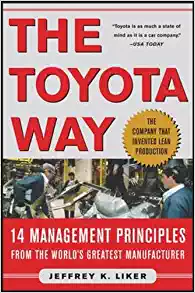
Lean principles are based largely on studies of the Toyota Production System (TPS) from the early 1980s and influence manufacturing and service organizations across the world today. Read on to learn about the Toyota Way Management Principles.
In 2001, the Toyota Motor Corporation summed up their philosophy, principles, and values in an internal document they referred to as, “the Toyota Way 2001.” The document expanded upon TPS with additional leadership and management practices that have made Toyota one of the most respected companies worldwide. Author Jeff Liker visited Toyota and summarized these principles in his 2004 book, The Toyota Way: 14 Management Principles from the World’s Greatest Manufacturer. The book covers Toyota’s history, successes, and ideas with many great Toyota case studies. This post will focus on summarizing Toyota’s 14 Principles. How many of these principles are followed by your Lean organization?
Principle 1: Base your management decisions on a long-term philosophy, even at the expense of short-term financial goals.
Focus on doing what is right for your employees and your customer. This will lead to positive results over time. Don’t get caught up in chasing share price or short-term targets.
Principle 2: Create continuous process flow to bring problems to the surface.
Lean focuses on improvement through waste reduction. Toyota realized that striving for continuous flow forces a reduction in buffers, such as inventory and just-in-case production. A great way to identify wastes in a process is by asking the question, “what prevents this process from using a continuous process?” Write down the answers you hear as they will be wastes.
Principle 3: Use pull systems to avoid overproduction.
Only complete work in response to a signal (Kanban) if pure flow is not possible. Pull systems are typically preferable to push systems since they minimize inventory, overproduction and waste.
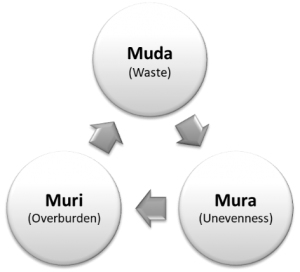
Principle 4: Level out the workload (heijunka).
Eliminating waste (muda) is a typical first step in Lean. However, it is critical to also even out the work (mura) and reduce overburden on the workers (muri). Heijunka is a Japanese term for the leveling of output by both volume and mix. For example, if customers have ordered 5 product A and 4 product B it would be common to produce in the sequence AAAAABBBB. Toyota would use heijunka to instead produce in the sequence ABABABABA.
Principle 5: Build a culture of stopping to fix problems, to get quality right the first time.
Toyota understands the high cost of poor quality and empowers employees to “stop the line” when they experience a problem. A signal (andon) shows leaders where the problem is so it can be addressed immediately. Note that Toyota designs their process in segments with small buffers between each segment. Most issues are corrected in the 5-10-minute buffer time and do not shut down the full line.
Principle 6: Standardized tasks are the foundation for continuous improvement and employee empowerment.
When you begin to improve a process you must agree upon a standard method. Then allow employees to try out changes that improve upon that standard. Incorporate what works into the new standard, and train coworkers on the improved process. Require that all employees use this same improved process going forward.
Principle 7: Use visual control so no problems are hidden.
Use 5S methods to standardize and optimize the work area and design simple visual systems at the place where the work is done. This will support flow and pull. For example, place a sign in a storage cabinet that shows what inventory should be located on each shelf. Another example of this principle is the A3 Improvement report, which captures an entire project on one piece of paper.
Principle 8: Use only reliable, thoroughly tested technology that serves your people and processes.
Work out a process manually before adding technology since new technology is often unreliable and difficult to standardize, therefore endangering the flow if not implemented correctly. Reject or modify technologies that conflict with your culture or that might disrupt stability, reliability, and predictability. Use technology to support people, not to replace people.
Principle 9: Grow leaders who thoroughly understand the work, live the philosophy, and teach it to others.
Grow leaders from within, rather than buying them from outside the organization. Your leaders must be role models of the organization’s philosophy and understand the daily work so that he or she can be a great teacher. These leaders will be respected and most effective.
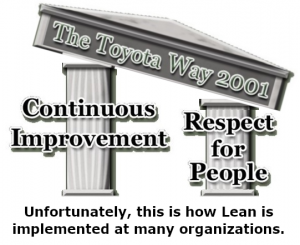
Principle 10: Develop exceptional people and teams who follow your company’s philosophy.
Respect for people is a key pillar of the Toyota Way management principles and Lean thinking, yet many Lean organizations do not emphasize this enough. Invest in your people. Committed employees will show up and work hard at completing and improving their job every day. As Toyota trainer and author Shigeo Shingo once said, “management must learn to shift their attention from fighting fires that should not be there to developing better people and processes.”
Principle 11: Respect your extended network of partners and suppliers by challenging them and helping them improve.
Have respect for your partners and suppliers and treat them as an extension of your business. They really are when you expand your value stream map! Value them and challenge them to grow and develop. It is great to set challenging targets, but be sure to assist your partners and suppliers in achieving them.
Principle 12: Go and see for yourself to thoroughly understand the situation (genchi genbutsu).
Solve problems and improve processes by going to the source to personally observe and verify data and facts. Even high-level managers and executives should go and see things for themselves. That way they will have more than a superficial understanding of the organization’s operations.
Principle 13: Make decisions slowly by consensus, thoroughly considering all options; implement decisions rapidly (nemawashi).
Nemawashi is the process of discussing problems and potential solutions with all of those affected, to collect their ideas and get an agreement on a path forward. This consensus process, though time-consuming, helps broaden the search for solutions. Once a decision is made, the stage is set for rapid implementation. This principle is like the concept Jim Collins identified in Good to Great and describes in Great by Choice of firing bullets, then cannonballs.
Principle 14: Become a learning organization through relentless reflection (hansei) and continuous improvement (kaizen).
Establish a stable process, use continuous improvement tools to determine the root cause of inefficiencies, and apply effective countermeasures. Use hansei (reflection) to openly identify all the weaknesses in your process and yourself. Now, become energized to implement countermeasures that will avoid those mistakes in the future. The goal is to develop a culture that encourages individual and team experimentation to learn what makes a process better.
The Toyota Way
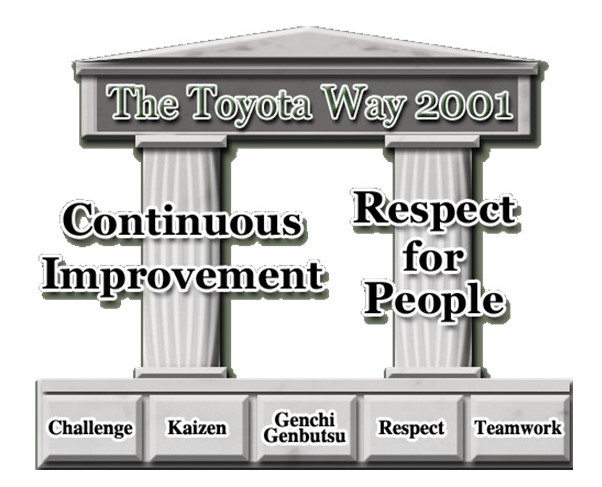
Toyota has become one of the best companies in the world by honing these principles over many years. Are there any principles you believe they missed? Please review the book for more detail about the Toyota Way management principles, or feel free to ask questions in the comments section below. You may also want to review our post about leadership lessons from Toyota.


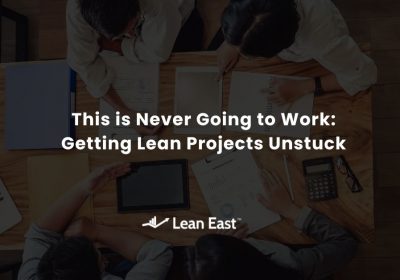

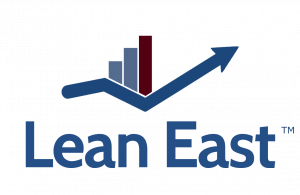
I applied for a Job at Toyota in Liberty NC about 10 days ago (2-14-24).
I have been at my last Job for 26 years in the Contract management sector and have held multiple High Level positions and worked in 5 out of 6 divisions within the portfolio. I have helped managed a MV from 3M to 200M and worked nationally. I have taught many leadership classes (6 thinking hats, what would Disney do, DISC, multiple John Maxwell series, Gemba, Customer, culinary & Finance classes/workshops. After reading “The Toyota way management principles” and the 14 principles associated within the standards, I AM REALLY EXCITED about the opportunity to possibly work for the Toyota family!
Good luck! Hope you receive a job offer and get to work with this great company!
How did it go? are you working there now?
This blog post brilliantly captures the essence of The Toyota Way! I particularly appreciated the focus on continuous improvement and respect for people. It’s fascinating to see how these principles can be applied beyond manufacturing. Looking forward to seeing more insights on lean management practices!
I really enjoyed this deep dive into The Toyota Way principles! It’s impressive how these concepts have not only revolutionized manufacturing but also inspired countless industries to adopt lean practices. The focus on continuous improvement and respect for people is so essential in today’s fast-paced environment. Looking forward to applying some of these ideas in my own work. Thanks for sharing!
This blog post beautifully captures the essence of The Toyota Way! I appreciate how it emphasizes the importance of continuous improvement and respect for people. It’s fascinating to see how these principles can be applied not only in manufacturing but also in various other sectors. Thanks for sharing these insights!
Thank you! Lean thinking is mostly “common sense” that unfortunately seems to be less common today!
This post beautifully summarizes the core principles of The Toyota Way! I particularly appreciate the emphasis on continuous improvement and respect for people. It’s inspiring to see how these principles not only optimize processes but also foster a strong team culture. Looking forward to applying some of these insights in my own workflow!
This post does a great job of breaking down the core principles of The Toyota Way. I especially appreciate how it highlights the importance of continuous improvement and respect for people. It really emphasizes that lean management isn’t just about efficiency—it’s about creating a culture of collaboration and learning. Looking forward to implementing some of these strategies in my own work!
This post provides a clear and insightful overview of The Toyota Way principles. I particularly appreciate how it emphasizes the importance of respect for people and continuous improvement. It’s fascinating to see how these principles can be applied broadly beyond the automotive industry. Thank you for sharing!
https://amzn.eu/d/feeznyv- Please read this “From Toyota To Tokyo”
Your feedback and reviews are welcomed
This article provides excellent insights into the Toyota Way and its core management principles! I love how you highlighted the focus on continuous improvement and respect for people. It’s inspiring to see how these principles can be applied beyond the automotive industry. Thank you for sharing such valuable information!
This post on The Toyota Way Management Principles is incredibly insightful! I appreciate the emphasis on continuous improvement and respect for people. Implementing these lean principles can truly transform an organization. Thanks for sharing these valuable insights!
This blog post provides a fascinating insight into The Toyota Way and its management principles. I appreciate how it emphasizes the importance of continuous improvement and respect for people. It’s inspiring to see how these principles can transform not just automotive manufacturing but other industries as well. Thanks for sharing these valuable insights!
Great insights! The Toyota Way really emphasizes the importance of continuous improvement and respect for people. It’s fascinating to see how these principles can be applied beyond manufacturing to various industries. Looking forward to more posts on lean management!